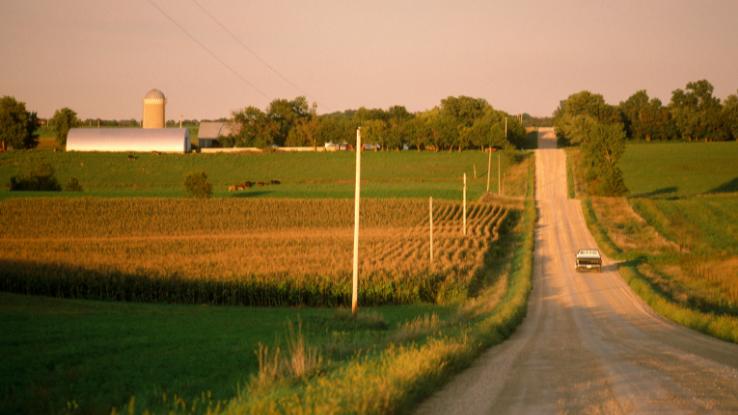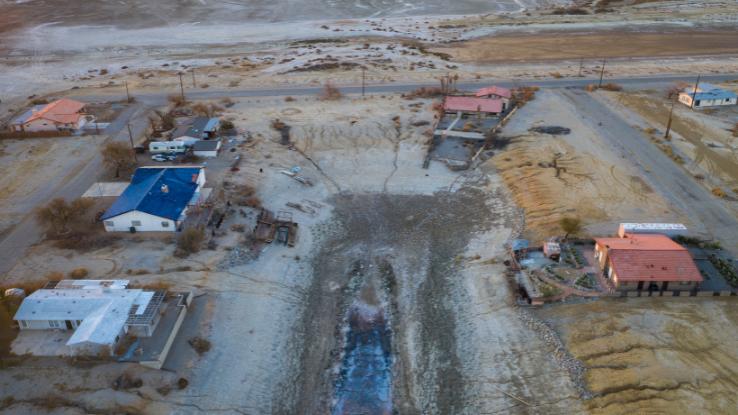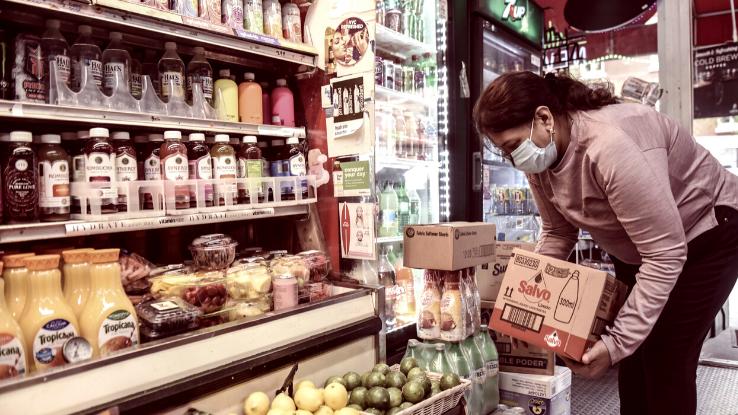When Will Whole Foods Deliver Again

The term "food desert" paints an authentic picture of a dire situation that many Americans face daily. In brusque, a food desert is a geographic area where residents' access to affordable, nutritious food is limited or nonexistent because of a lack of user-friendly grocery stores.
The nonprofit Nutrient Empowerment Projection (FEP) rightly points out that the term "food desert," as defined by the U.Southward. Section of Agriculture (USDA), is problematic because it centers on "proximity to food providers, rather than considering other factors such every bit racism, toll of living, people being fourth dimension poor and cash poor, cultural appropriateness of available foods, [and] the ability of people to grow their own foods." The FEP besides notes that "nutrient apartheid" and "food oppression," although less common, are more authentic terms considering they point to the systemic issues that strength folks into food deserts.
And then, how widespread is food oppression? Co-ordinate to a 2017 report from the USDA, nearly 39.five million Americans alive in low-income and low-access areas (or what the USDA has termed "food deserts"). Of these nearly 40 1000000 people, half have limited access to full-fledged supermarkets or grocery stores. Without a doubt, food deserts — that is, food oppression — underscore(s) the various inequities that exist in the United states of america, and, in turn, create additional health-related challenges for folks living within them. We aim to explore the pervasiveness of food deserts in accolade of National Poverty Awareness.
If you aren't impacted by food oppression, you might think of the excess of nutrient constitute in supermarkets and large-box stores. Just many Americans don't have the privilege of so many options — or any convenient, nutritious options at all. The Annie E. Casey Foundation has found that so-called "food deserts" often share some, if not all, of the post-obit characteristics: they are located in areas with smaller populations; feature college rates of abandoned and vacant homes; and are habitation to folks who take lower income and education levels. Additionally, unemployment rates are oft higher in food deserts.

Researchers at Johns Hopkins University establish that the availability of high-quality food and supermarkets is linked to "racial residential segregation, poverty, and urbanicity." Regardless of geographical area (rural vs. urban), Black Americans are disproportionately impacted, often living in areas deemed food deserts.
The aforementioned inequality and lack of access disproportionately affect Indigenous and Latinx people also. That is, neighborhoods and communities with predominantly BIPOC residents feature fewer stores, greater distance between homes and stores, and fewer community resources that could assistance folks access food and supermarkets, such equally a lack of feasible public transportation and infrastructure.
There isn't just 1 cistron that causes food deserts. Several contributing factors include transportation challenges, convenience nutrient and income inequality. "When researchers from Brownish University and Harvard University studied diet patterns and costs, they constitute that the healthiest diets — meals rich in vegetables, fruits, fish and nuts — were, on boilerplate, $1.l more expensive per day than diets rich in processed foods, meats and refined grains," the Foundation notes. "For families living paycheck to paycheck, the higher price of healthy nutrient could make it inaccessible even when it'due south readily available." Moreover, folks who receive SNAP benefits don't always take access to nutritious foods, based on the parameters of the program.
How Does Food Oppression Chronicle to Healthcare?
So, how does food oppression chronicle to healthcare and your well-existence? In many ways, it boils down to a person's ability to cull. In so-chosen food deserts, there's not but a lack of options, but cost tin as well figure into the decision. "Many food deserts contain an overabundance of fast food chains selling cheap 'meat' and dairy-based foods that are high in fatty, saccharide and table salt," FEP notes. "Processed foods (such as snack cakes, chips and soda) typically sold by corner delis, convenience stores and liquor stores are usually merely as unhealthy."

Moreover, folks navigating food oppression may also have difficulty accessing foods that align with their dietary needs or restrictions. For those with celiac disease, lactose intolerance or other food allergies, this can crusade an abundance of problems. Without larger chain stores, alternatives — like nut-based milks, for example — simply aren't bachelor. But just because the options may exist in certain areas doesn't mean folks tin e'er access them. FEP reports that "urban residents who purchase groceries at modest neighborhood stores pay betwixt 3 and 37% more than suburbanites ownership the same products at supermarkets."
Although relying on fast-food products and other processed goods may be the just financially feasible choice for some, diets that center on these foods in the long term tin can have lasting consequences on your health. These lower-quality foods are often linked to college rates of Type 2 diabetes, cardiovascular disease and other health conditions. Pair this with the fact that both fatphobia and racism take been long ingrained in the healthcare and medical industries, and you can commencement to understand the challenges folks face when seeking care and support.
So, what can be done to dismantle nutrient oppression? While funding programs that tell us all to eat healthy may be nice in theory, these campaigns do very trivial to address the real problems. That is, such campaigns displace the blame, centering "eating healthy" as a selection. But for many, there is no choice to begin with. Instead, supporting modest stores and locally sourced farmers' markets and growers can have a huge impact, for example. Moreover, expanding SNAP benefits, incentivizing grocery stores to move into "nutrient deserts" and offer affordable nutrient, and fighting for policy reform can all help create lasting change.
Resource Links:
- "Food Deserts" via Food Empowerment Project (FEP)
- "Low-Income and Low-Supermarket-Access Census Tracts" via U.S. Department of Agronomics (USDA)
- "The Intersection of Neighborhood Racial Segregation, Poverty, and Urbanicity and its Bear on on Nutrient Shop Availability in the U.s.a." via John Hopkins University | U.S. National Library of Medicine
- "Do healthier foods and diet patterns toll more than less healthy options? A systematic review and meta-analysis" via Brown University, Harvard University | BMJ Journals
- "Nutrient Deserts in the The states" via The Annie Eastward. Casey Foundation
- "How to Utilise for SNAP Benefits" via Reference.com
- "Racism Is Officially a Public Health Threat, simply Will Healthcare See Changes?" via Enquire.com
Source: https://www.symptomfind.com/health/what-are-food-deserts?utm_content=params%3Ao%3D740013%26ad%3DdirN%26qo%3DserpIndex
Belum ada Komentar untuk "When Will Whole Foods Deliver Again"
Posting Komentar